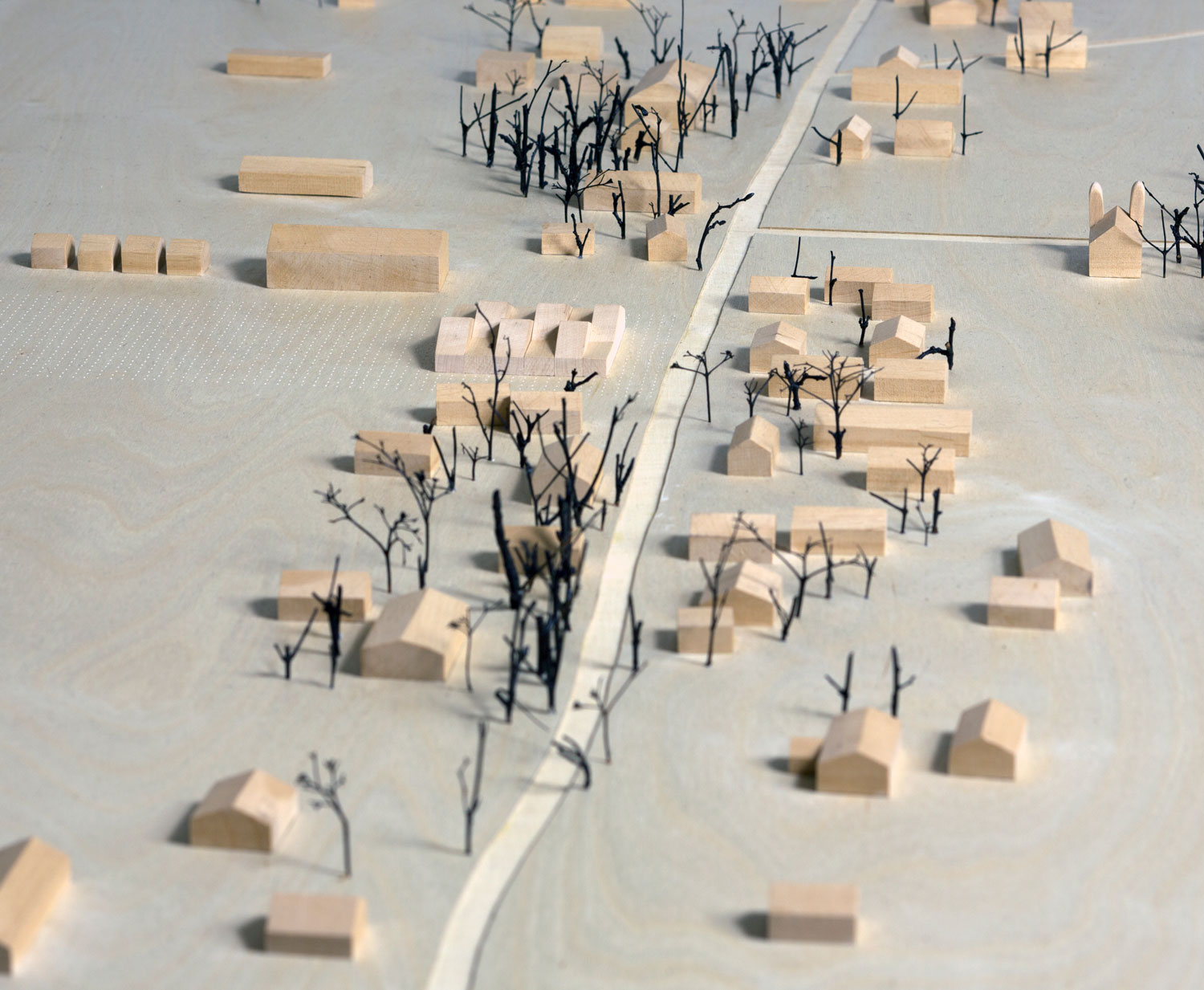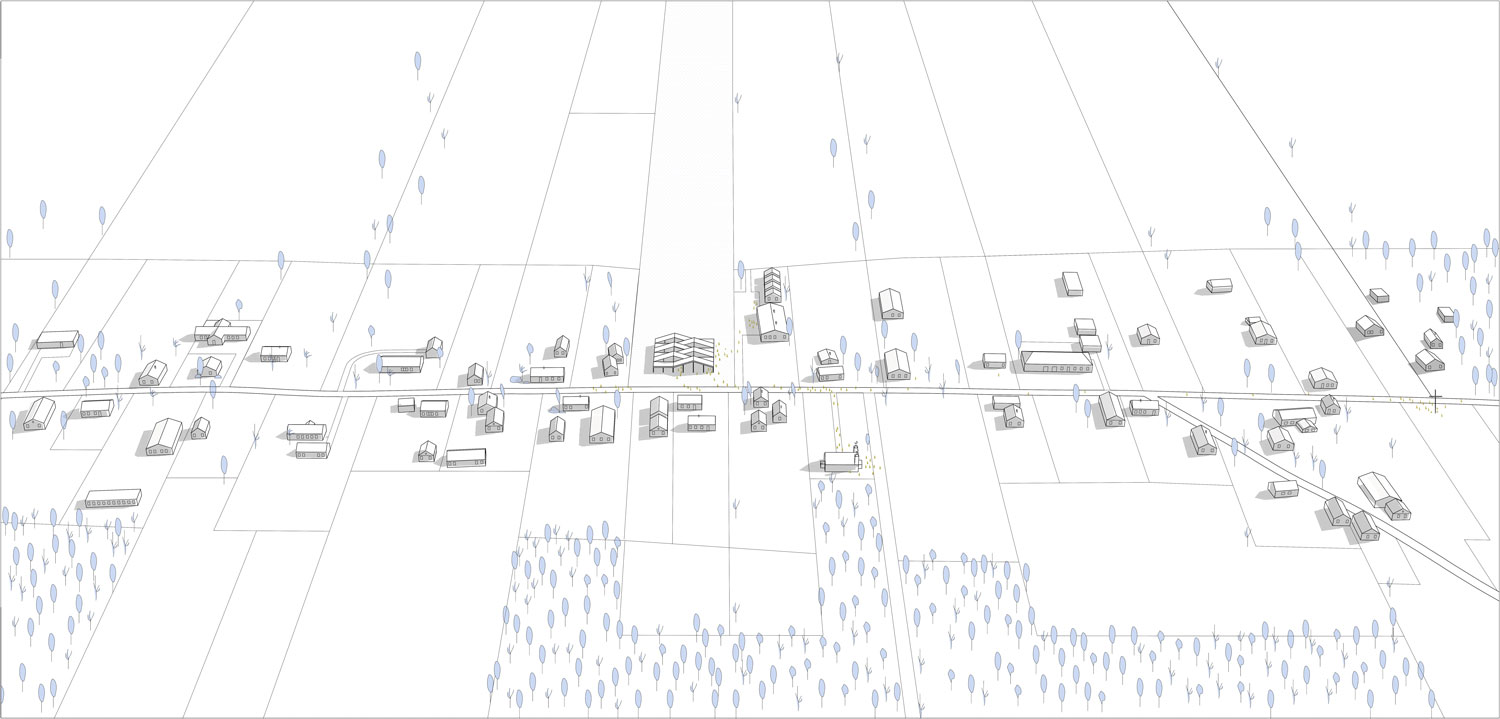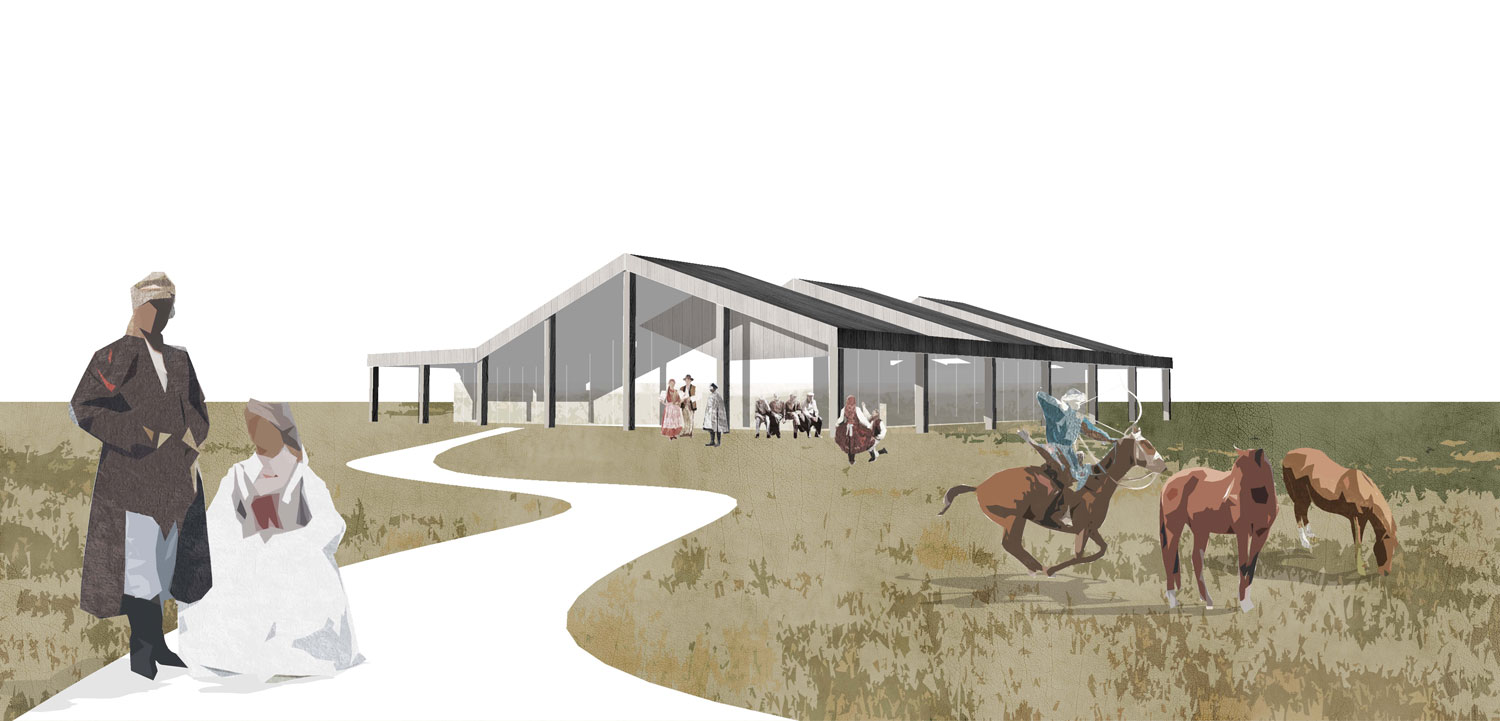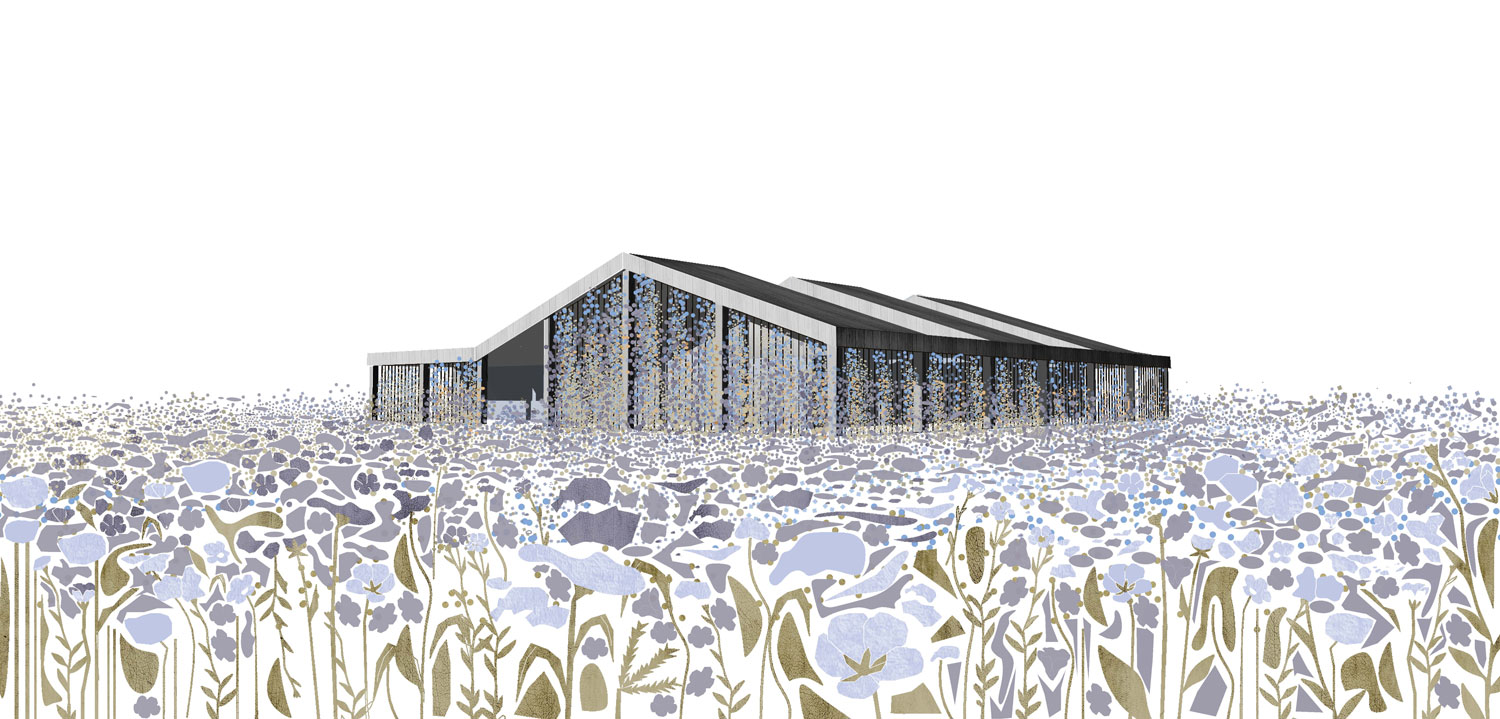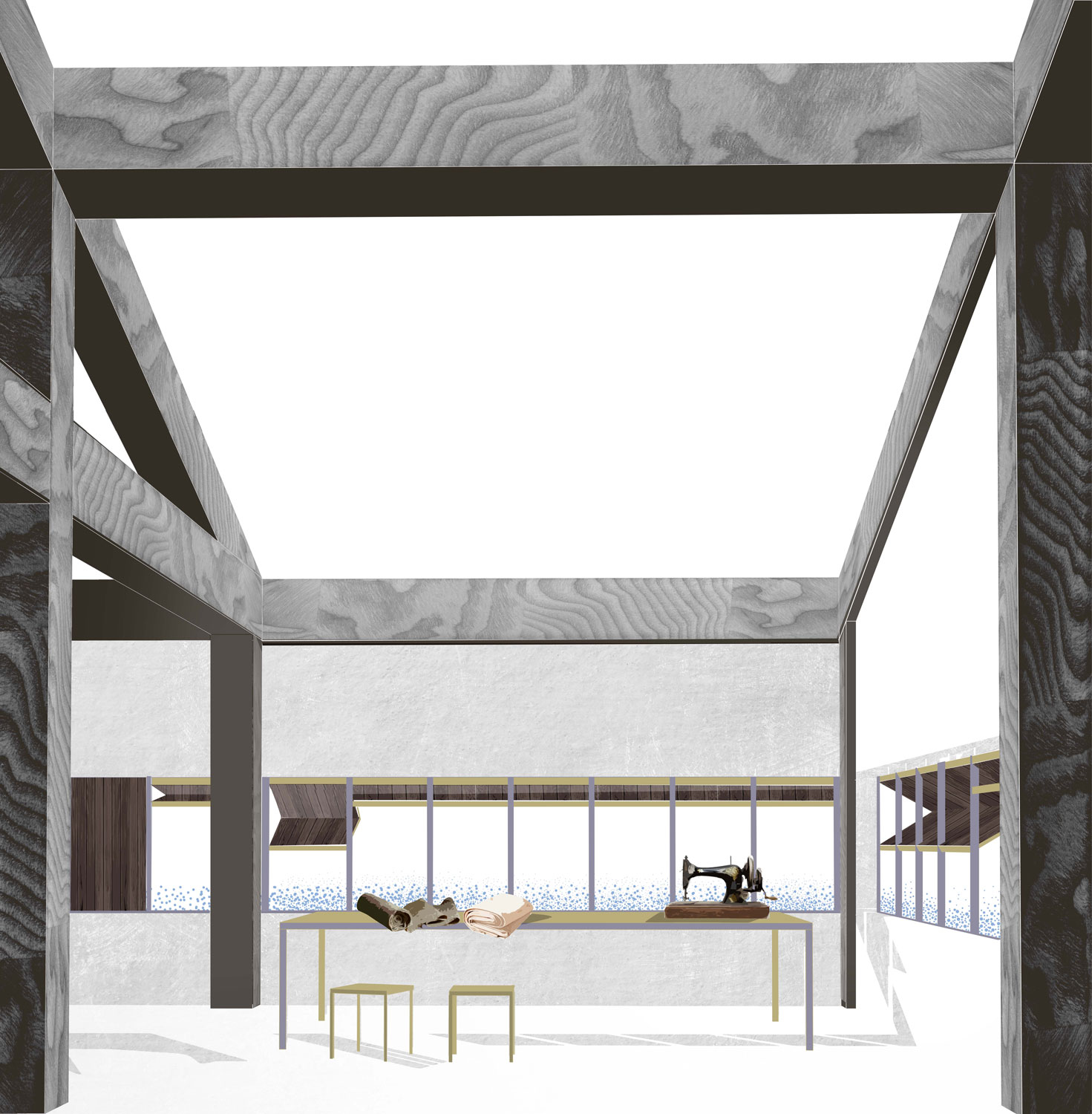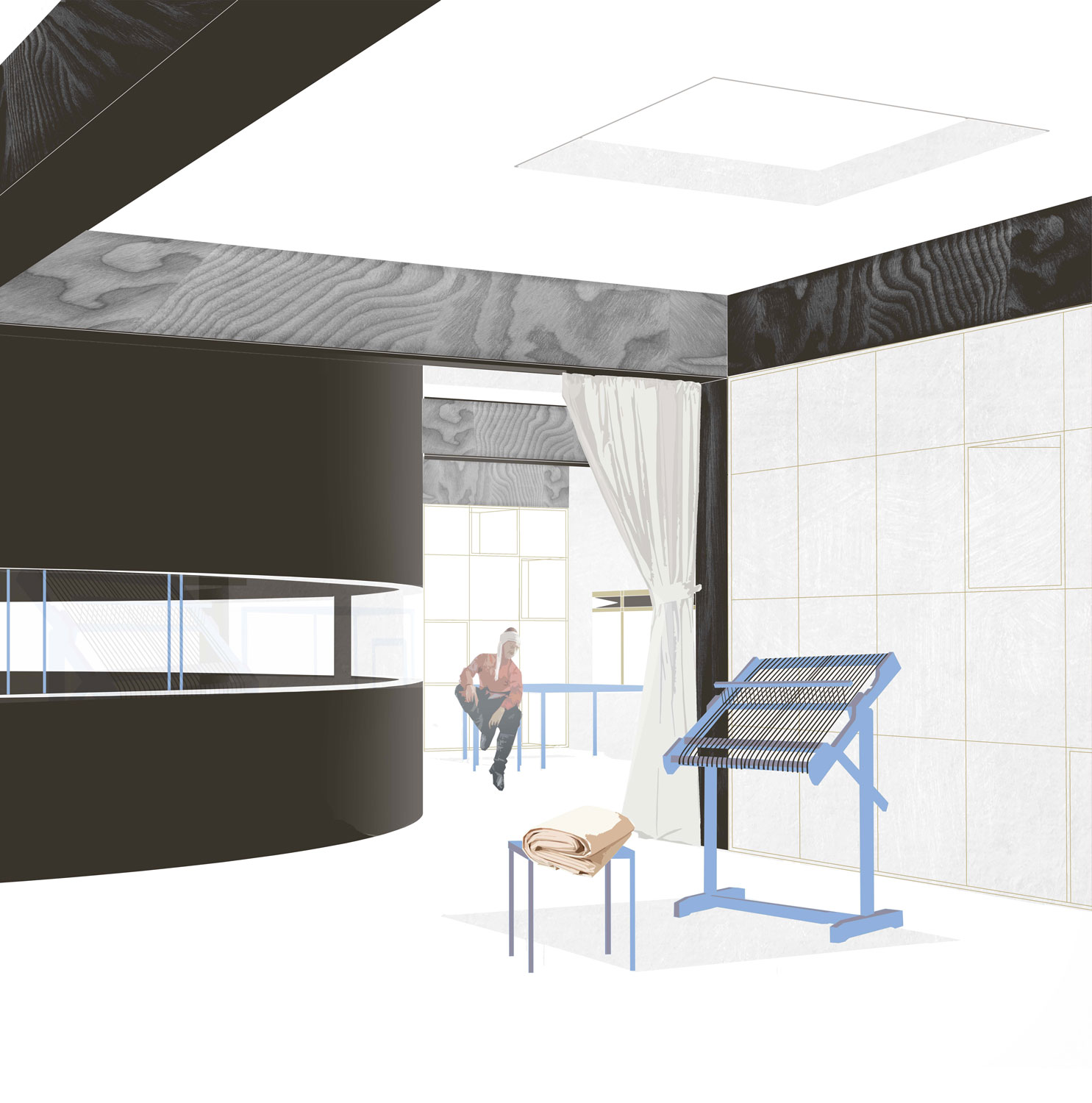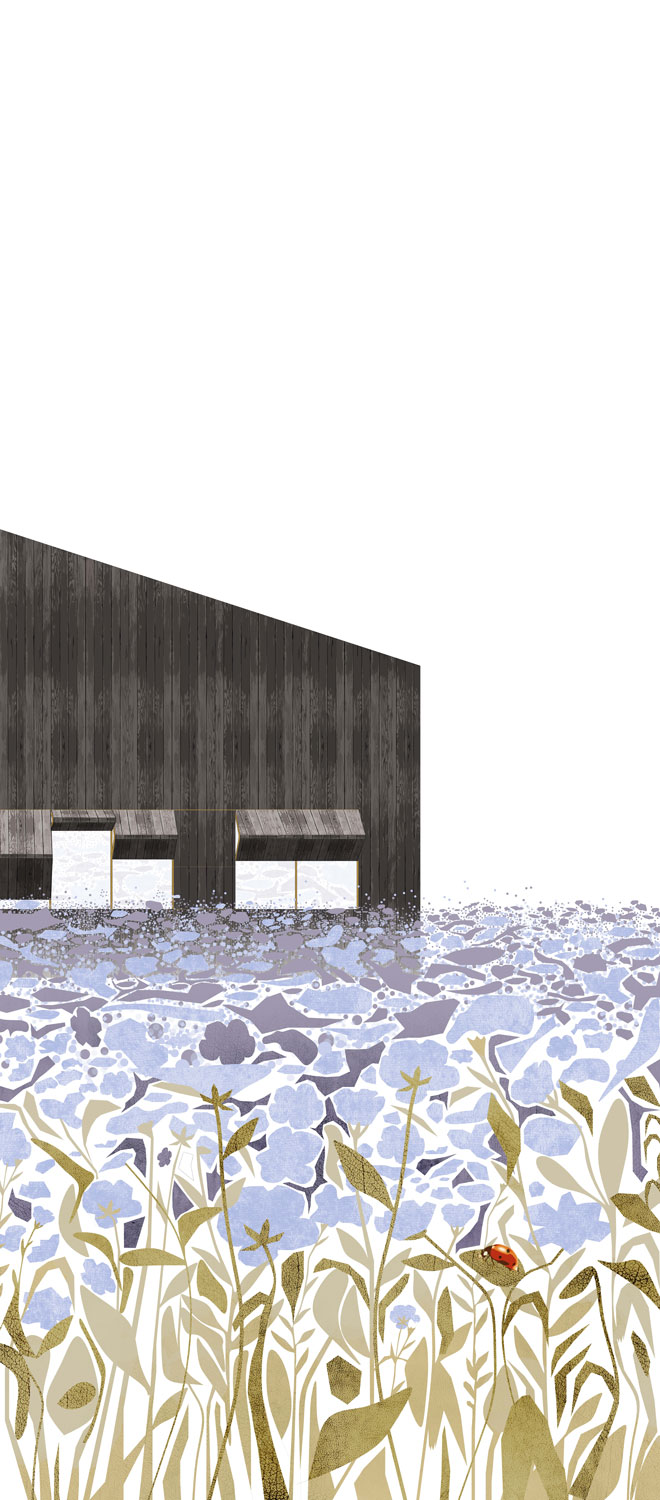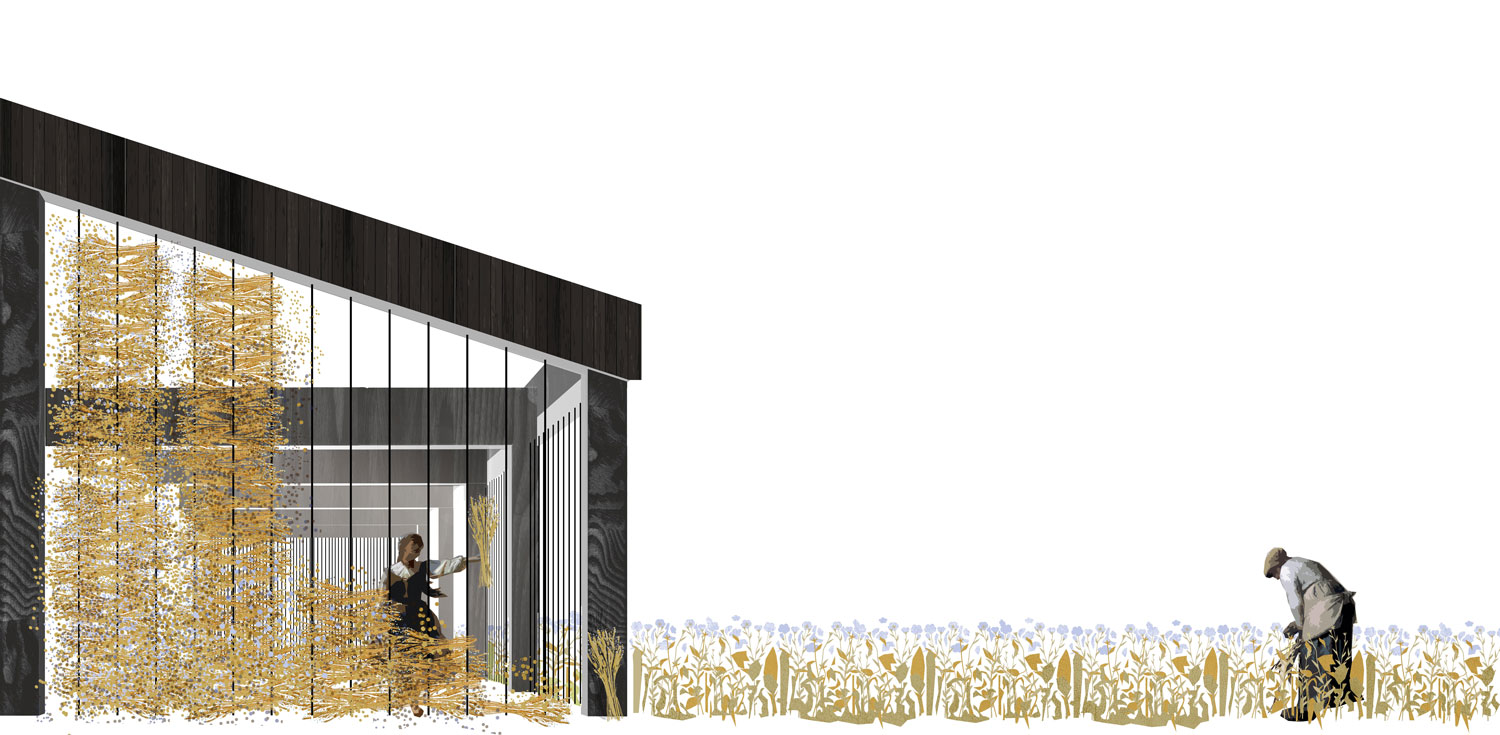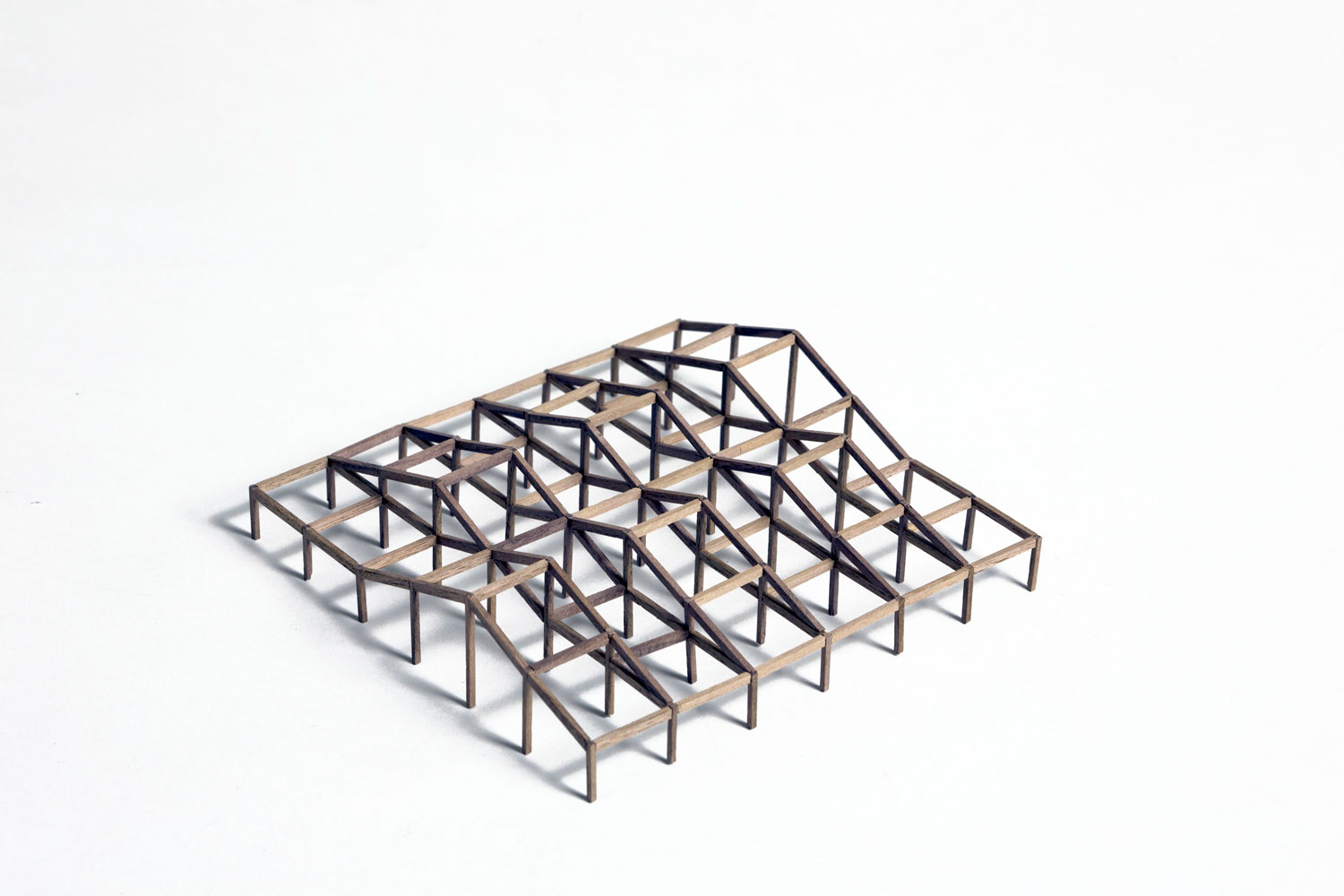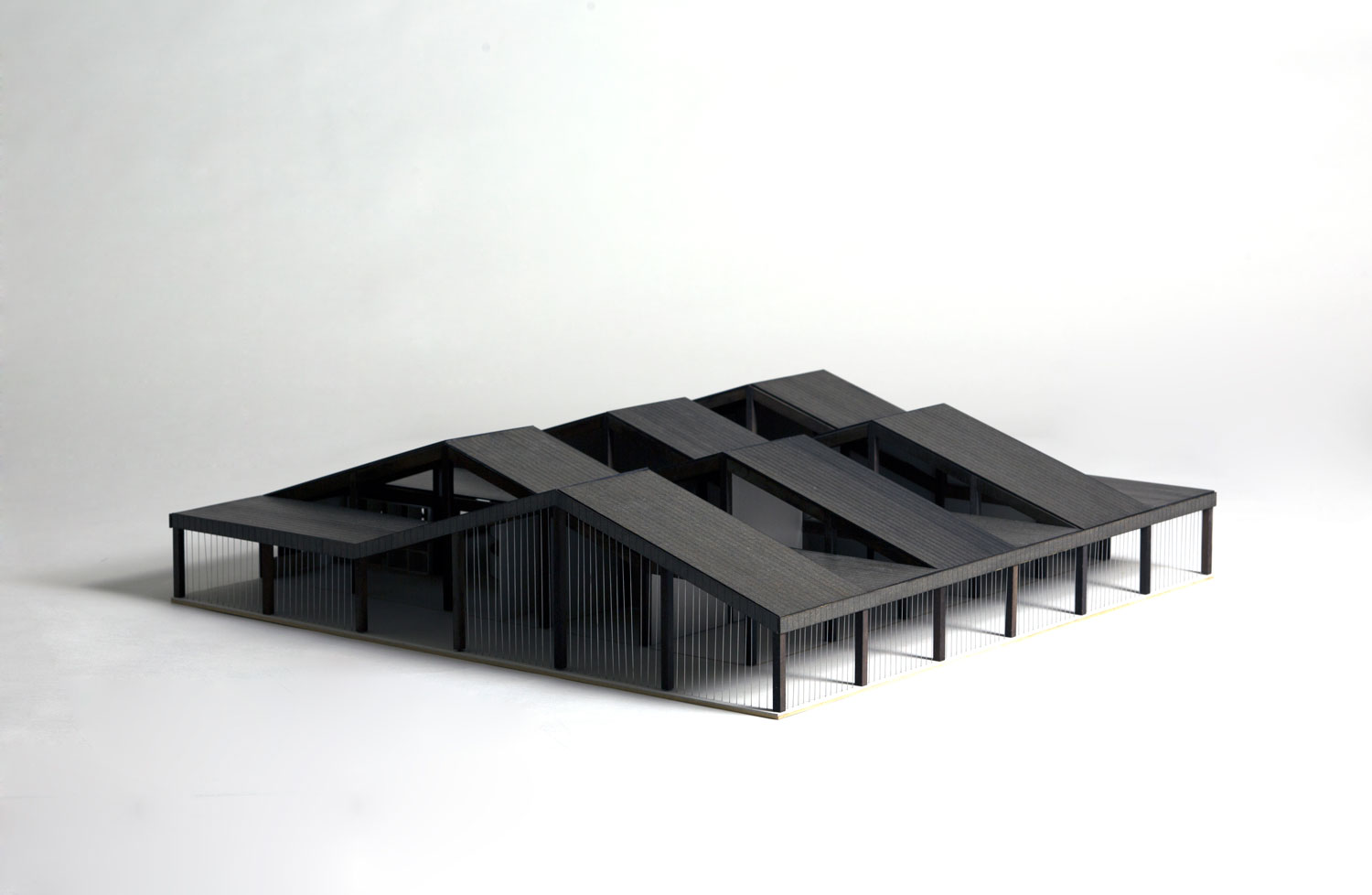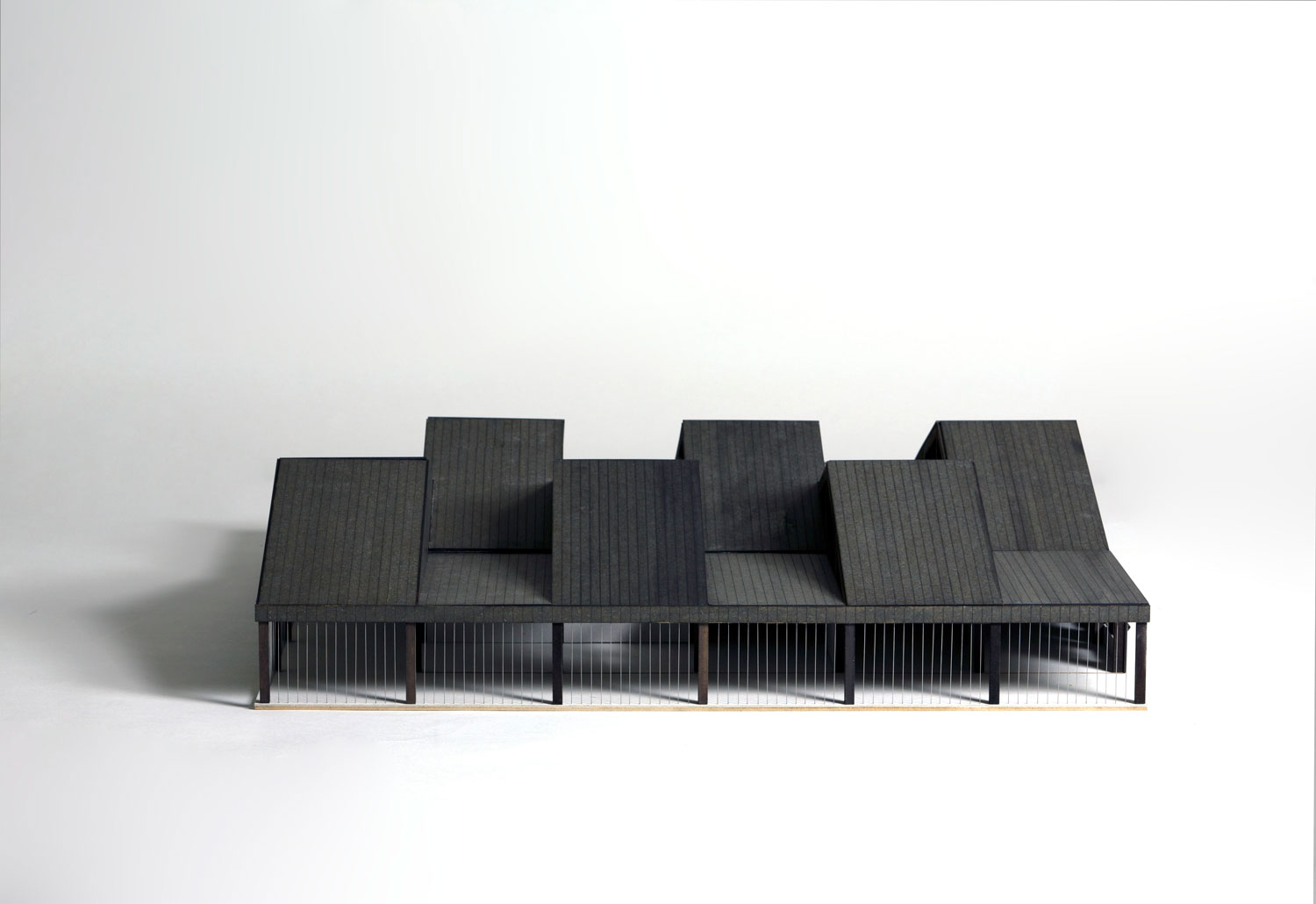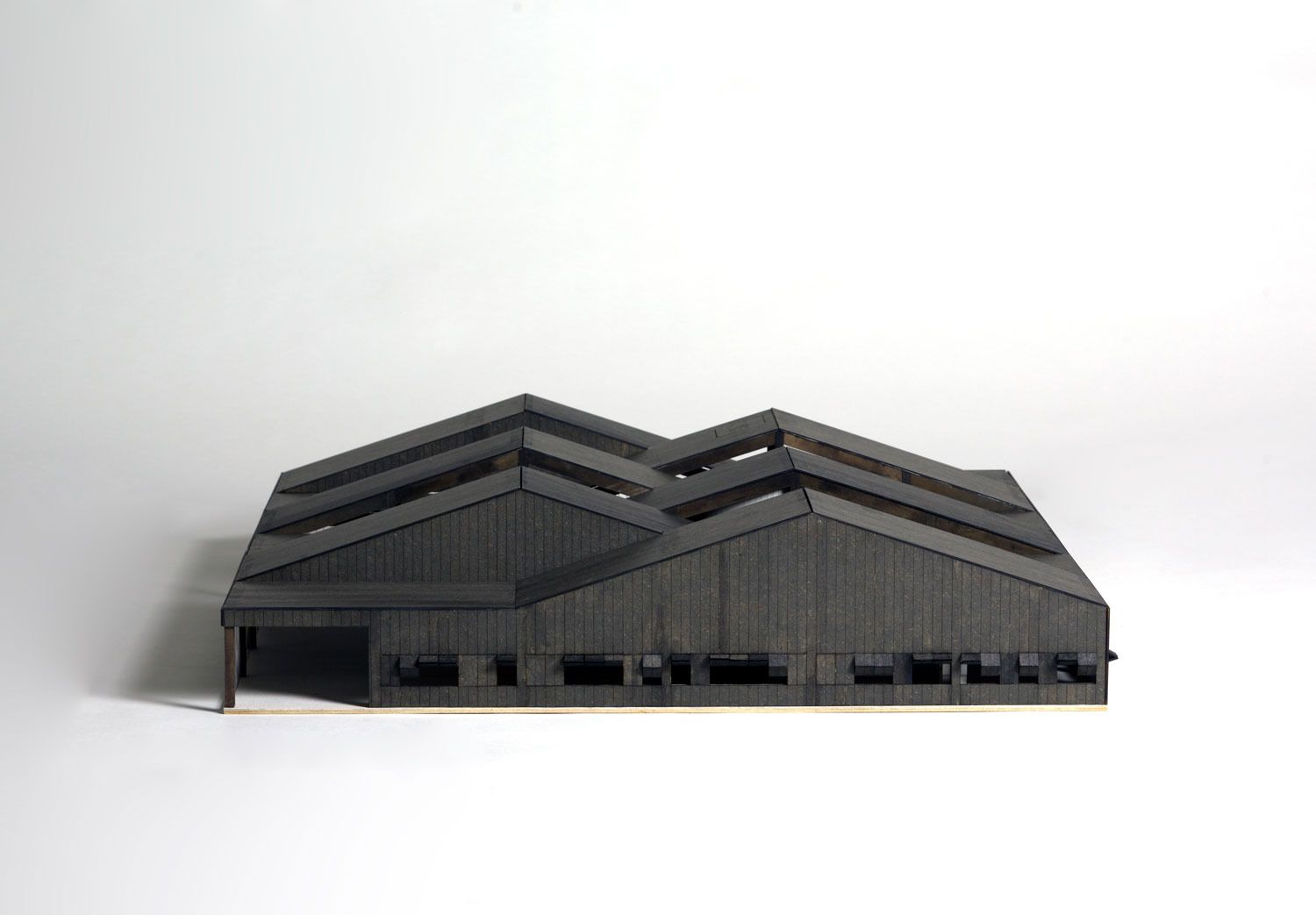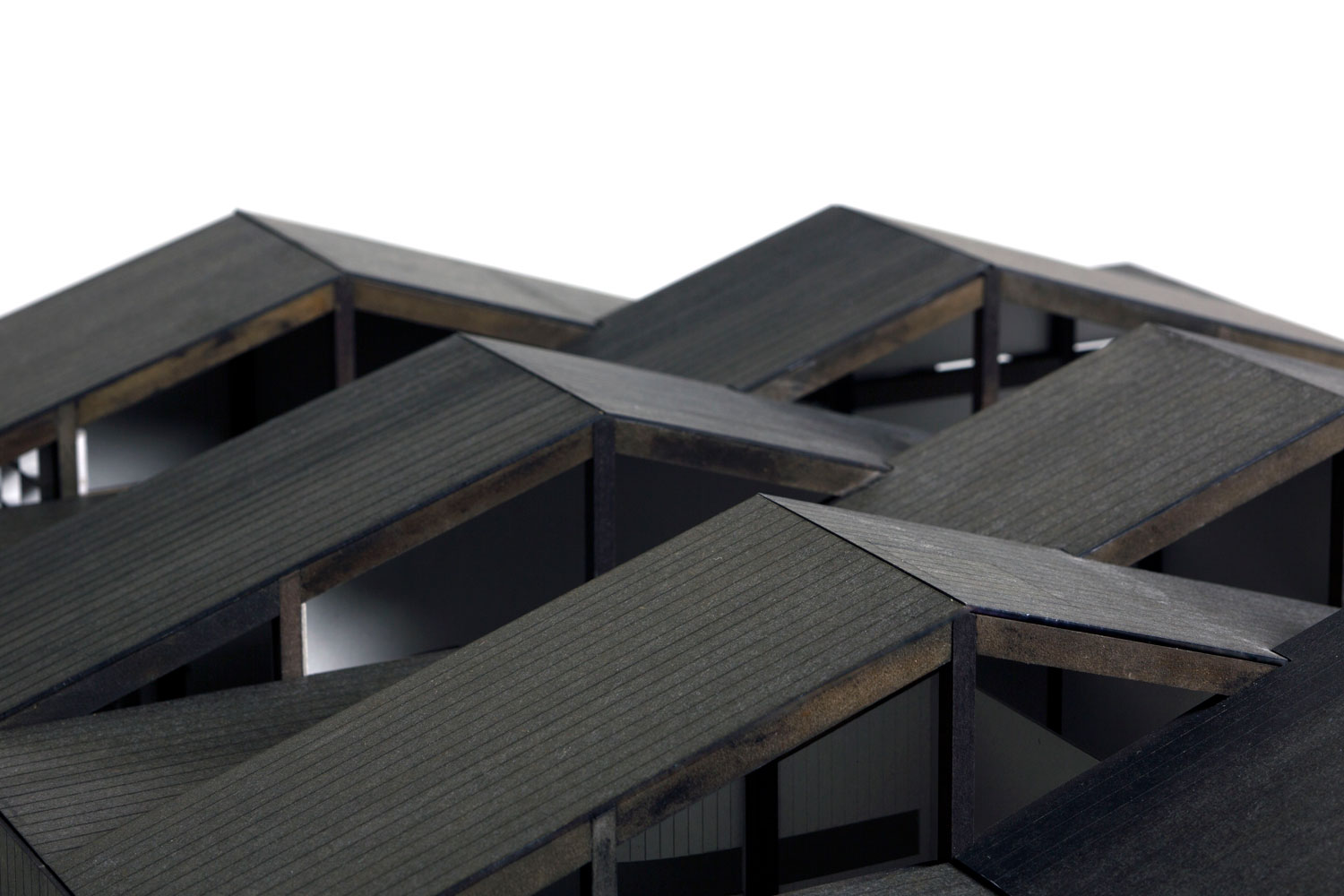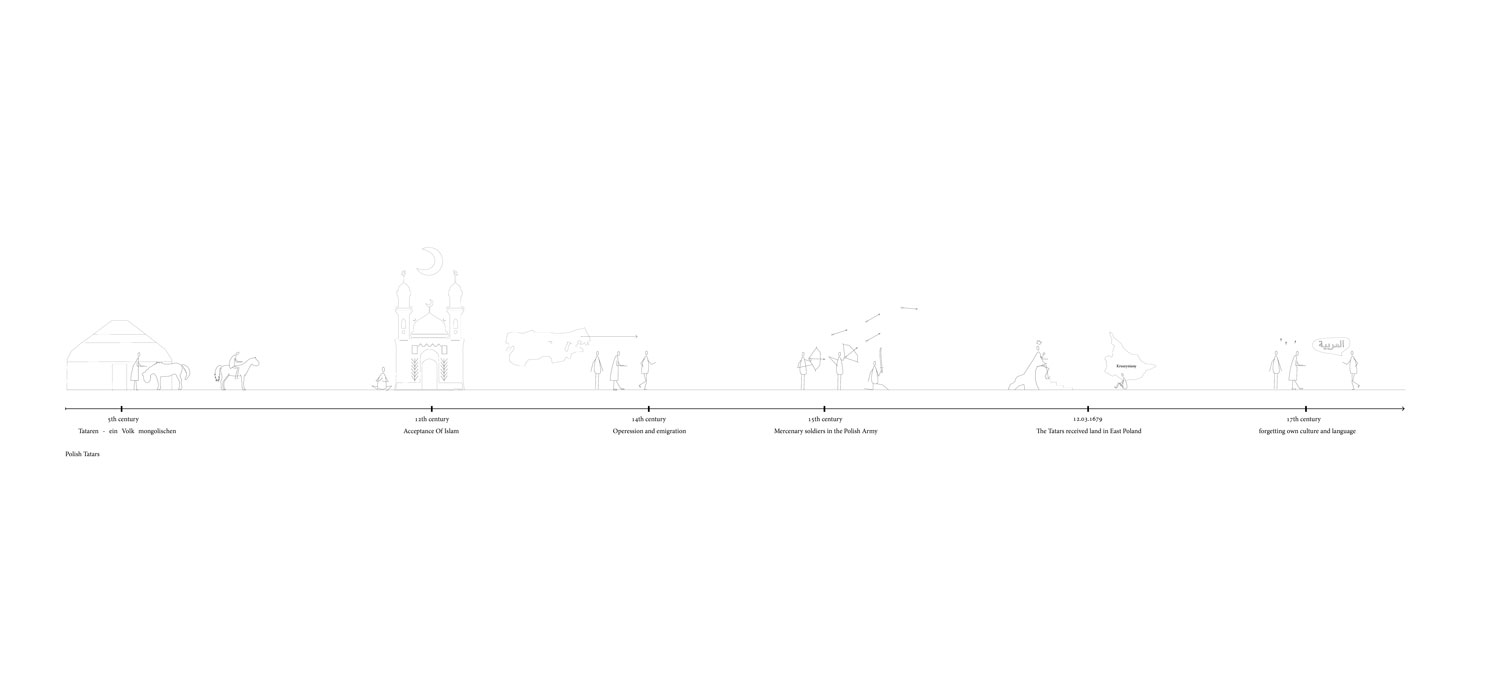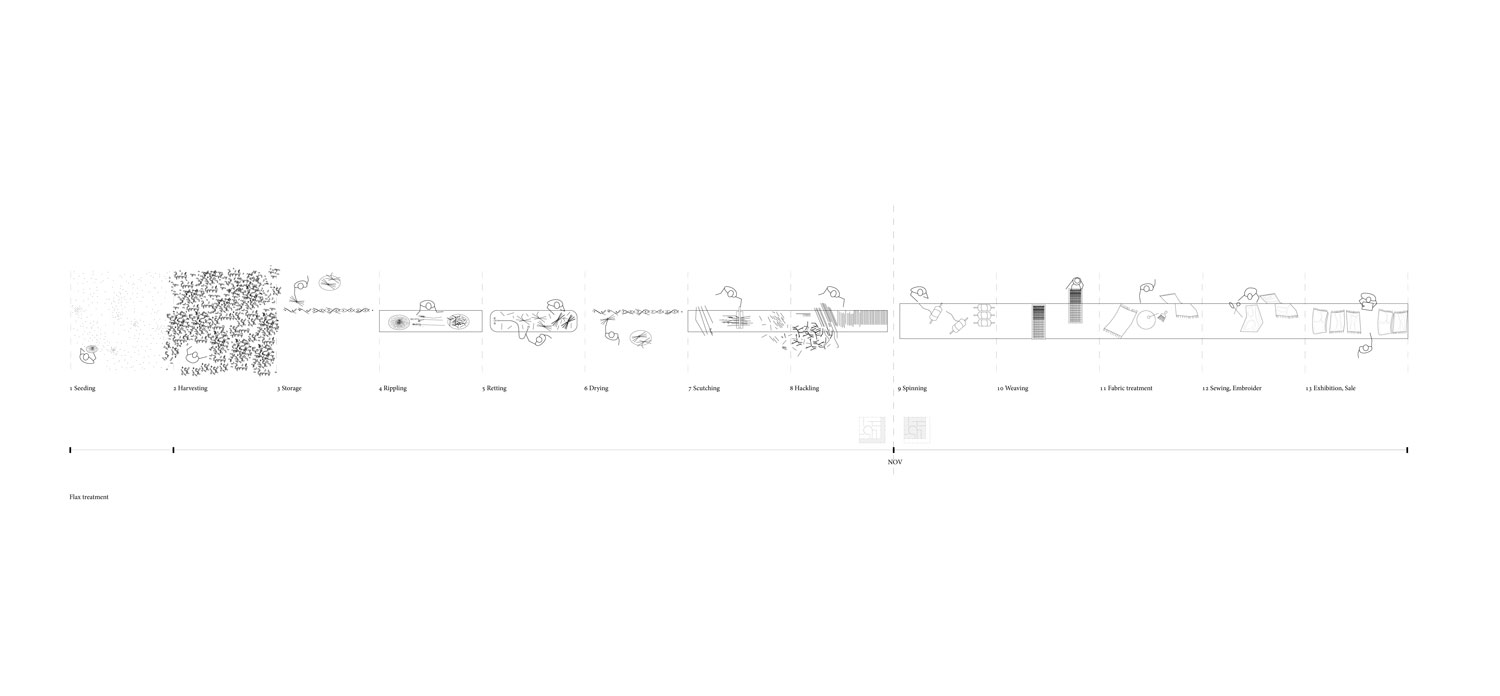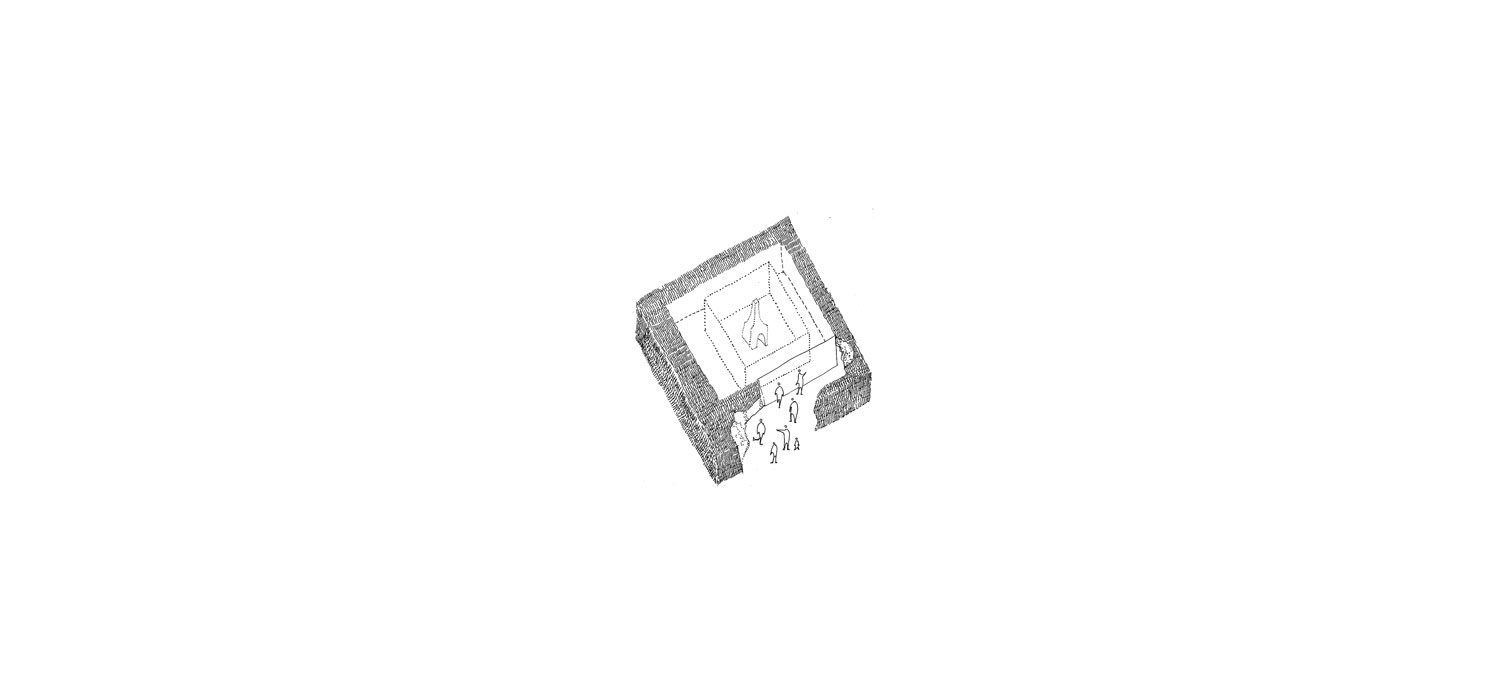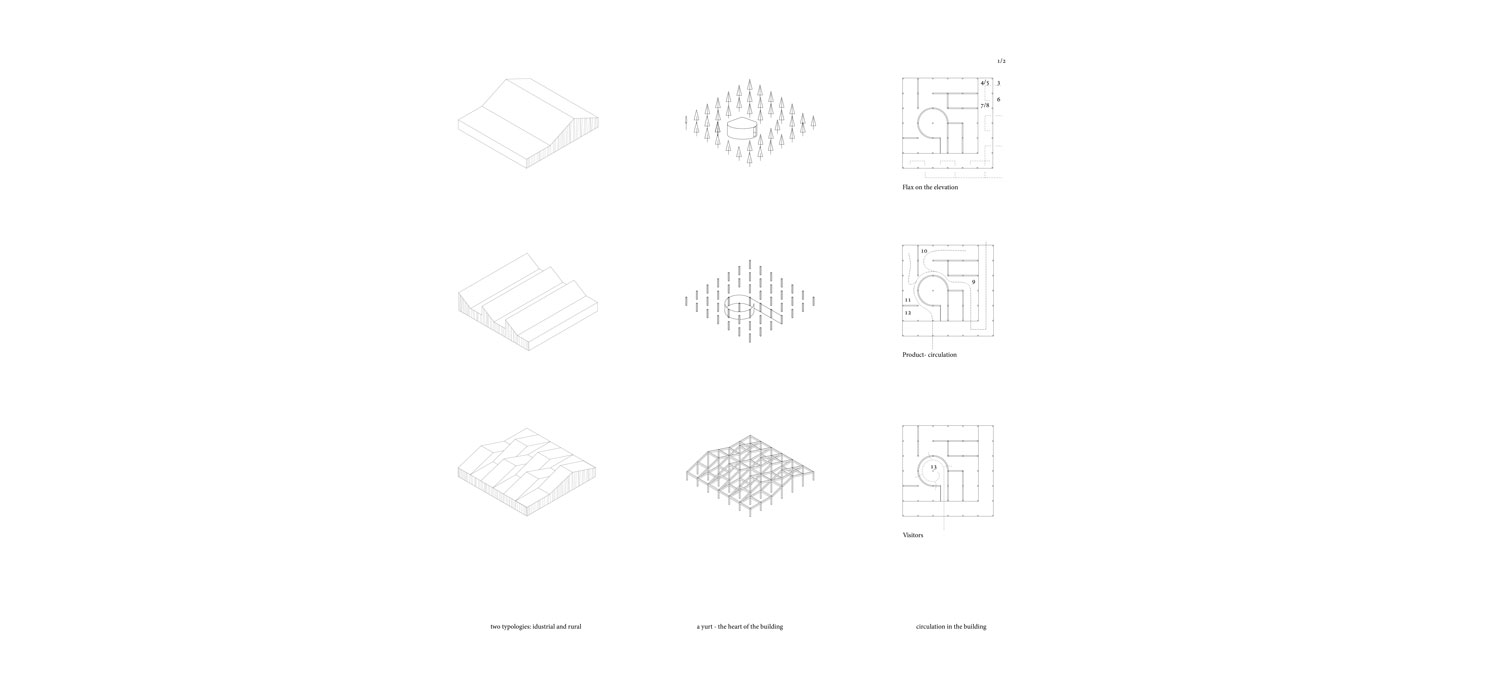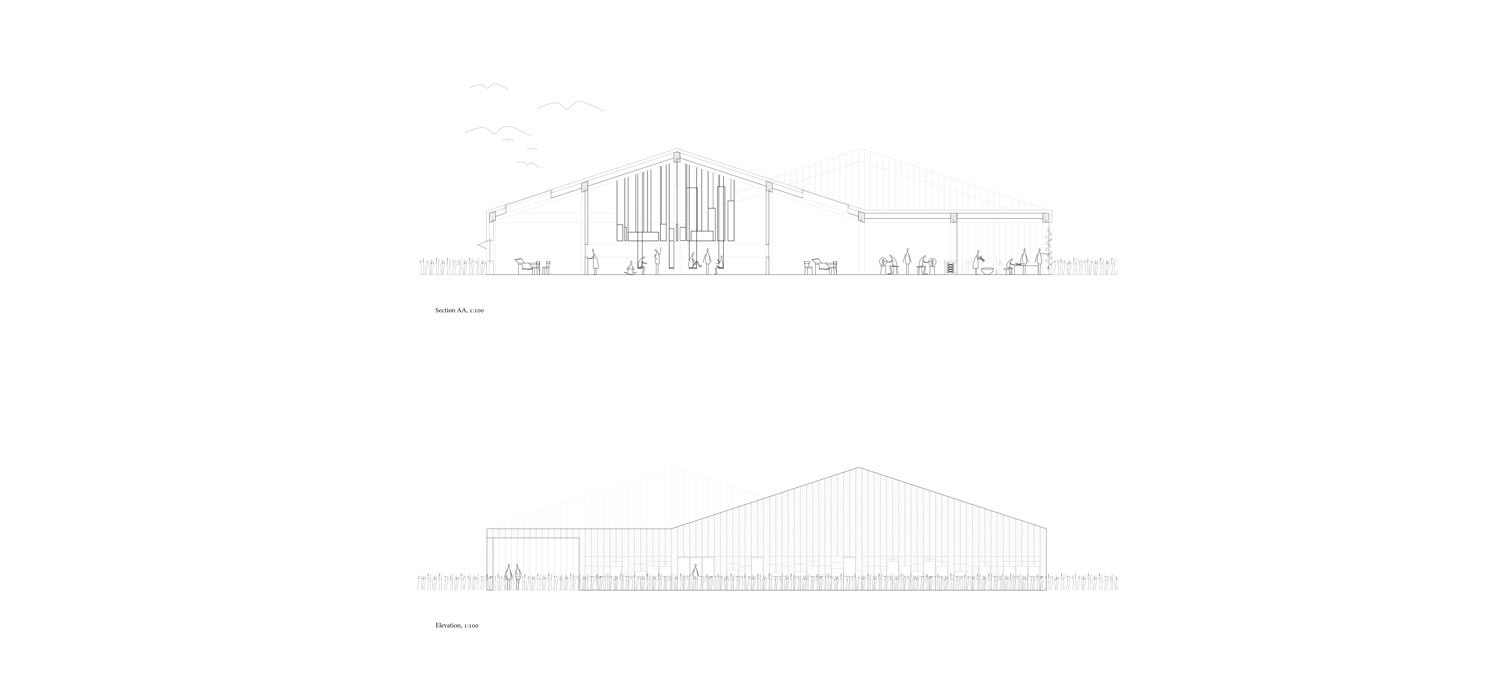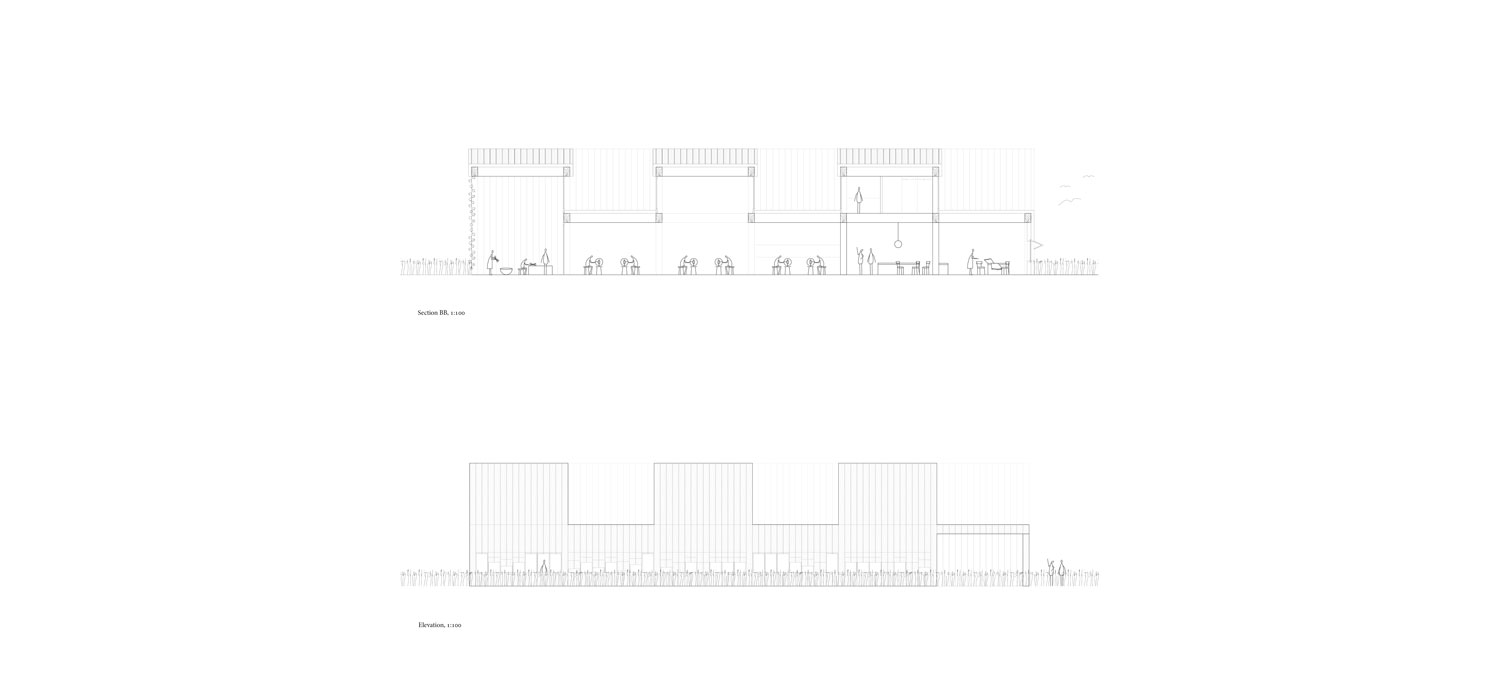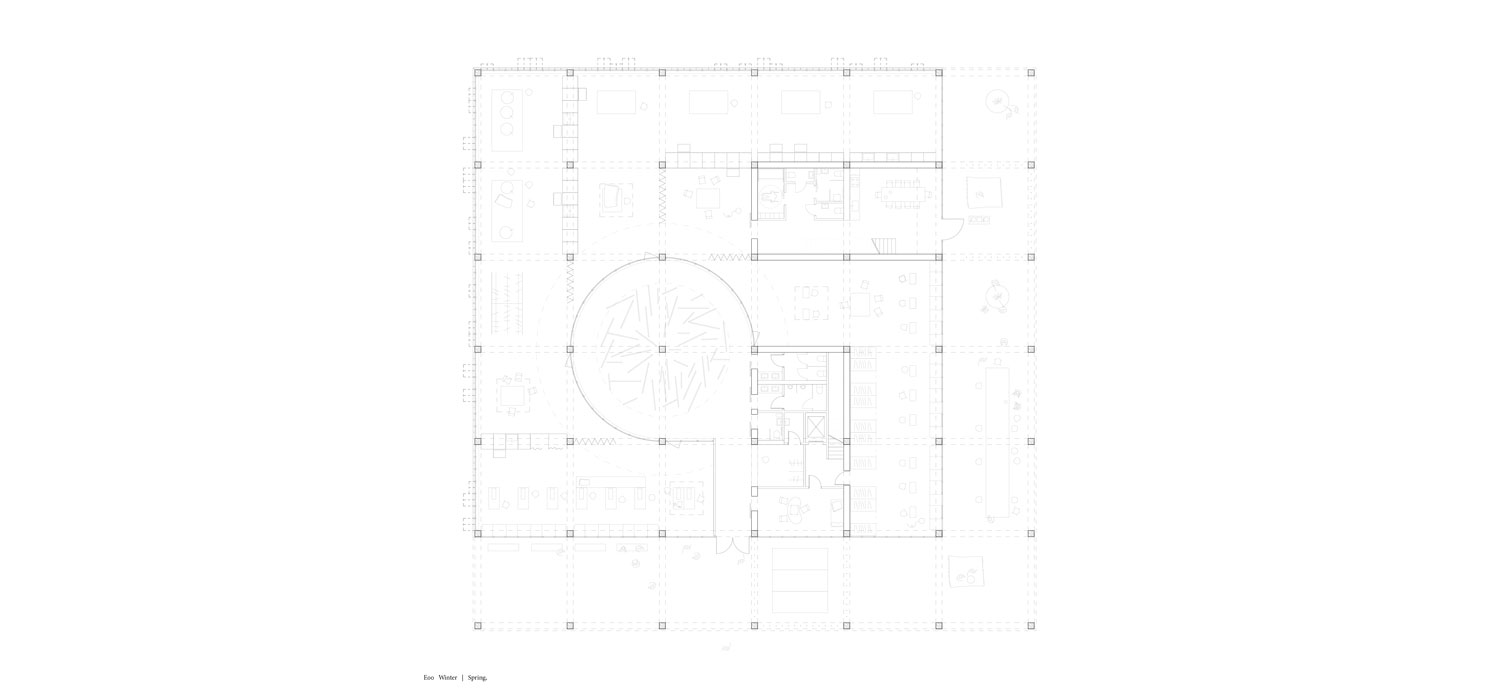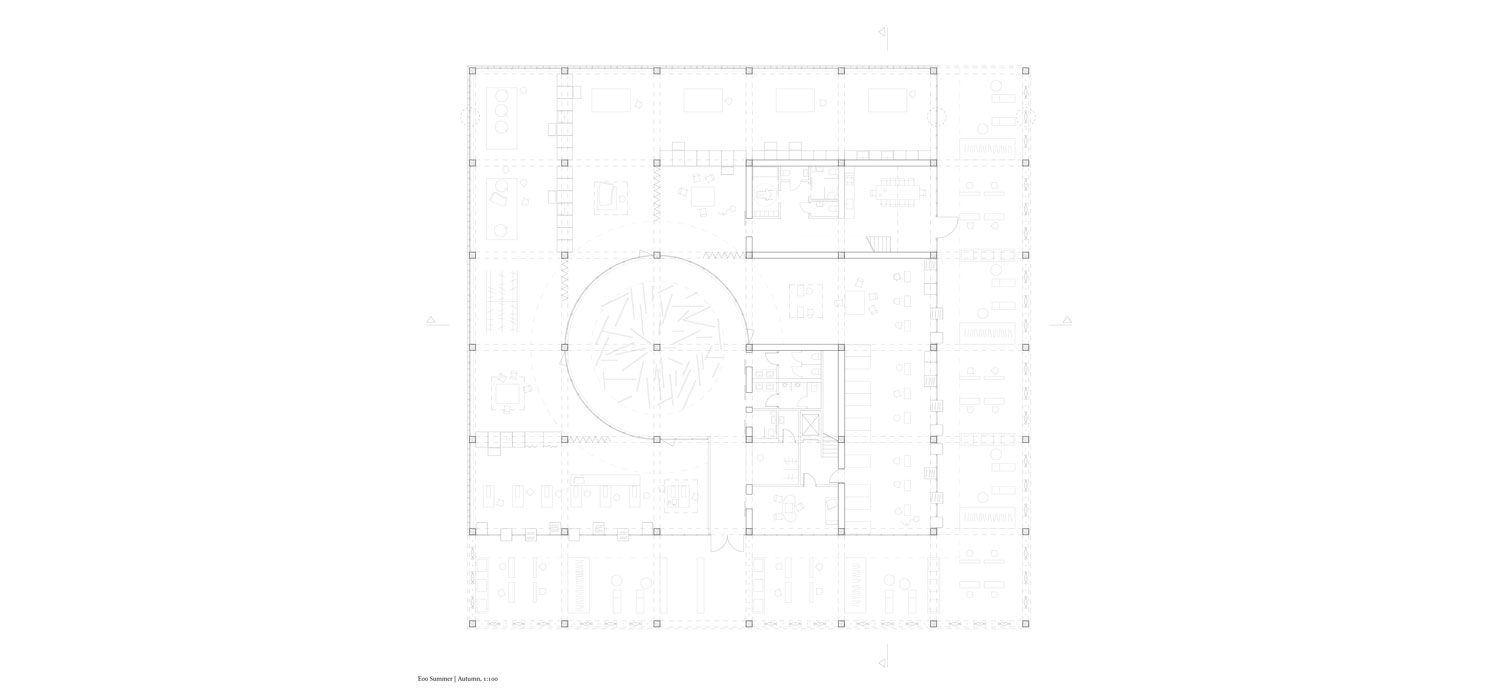1971-EWA-PL-2017
Client: TU Berlin
Status: Academic
Location: Kruszyniany, Poland
Coordinates: 53.1764496,23.807473
Climate: Continental, Temperate
Materials: Vegetal, Wood
Environments: Countryside, Rural
Visualizer: Studio
Scale: Medium
Types: Commercial, Factory
The idea for this project comes from analysing the current situation of ethnic minorities from around the world, and questioning how architectural instruments could improve and solve the most pressing issues faced by these people, before their culture vanishes completely. The minority group that was carefully examined by us was the Tatars population in Europe. The westernmost location of the remaining Tatars population is in a small village in East Poland – Kruszniany. As opposed to the new Muslim residents in Western Europe, which is quite a new social phenomenon, the Tatars have been settled in Kruszyniany for over 300 years. Moreover, they are perfectly integrated with the locals and could be one of the best examples of multicultural cooperation and interaction.
Nowadays, globalisation brings out an increasing homogeneity that works against the richness and diversity of local cultures. The preservation of cultural identity is an essential aspect of peaceful cooperation. People with a strong sense of identity are more likely to interact with other cultures. Instead of making another centre with a passive program, such as a museum, we created a fabric manufactory to support the Tatars culture in this region. This effortlessly cultivates the Tatars traditions in an active manner. It establishes and distributes new job opportunities which protects the nearby city from uncontrolled urban growth. It also has a strong connection with the local history and industry of the region which is based on manufacturing fabrics from flax for weaving and sewing.
The traditional treatment of flax includes 14 steps from the planting of the flax to the final fabric. Processing the bundles of stems to extract the fibers for spinning is a complex task that requires simple but special tools, a lot of hard physical work, and a sense of timing and judgement that comes only from experience. Half of the steps in the process must be completed outside and must be done three months after the flax is harvested. It was a challenge to create flexible rooms for this purpose which will only be occupied for a quarter of the year.
To solve this problem we designed flexible elevation where the flax can be stored. It is a system of movable steel ropes where the bundles of flax are placed in between these ropes. Here they are wicked and dried naturally. The staff members control and change the configurations as needed and create a perfect work environment for themselves. Automatically it defines the walls for a flexible area. For the rest of the year when it is not used for the flax treatment, the elevation disappears and becomes a semi-open space for many other activities such as celebrating traditional Tatars holidays.
The space is divided into three sectors – the flexible space outside for employees, the permanent production space, and the separated space for visitors. In the middle of the building there is an exhibition room accessible for visitors with the final products such as carpets and traditional clothing. This is the heart of the building with its circular shape alluding to the traditional Mongolian architecture – a yurt. Furthermore, the form simplifies the arrangement of the other seven processes for the industrial treatment of flax. This all happens in a circular pattern and makes the handing over of the products to further processing extremely efficient.
In addition, the horizontal slit windows in the visitors’ room enable them to take a closer look at the factory without disturbing the employees. The manufacturing process interlaces two typologies which are reflected in the roof structure. The rural image is expressed from the main street side as a gable roof and is combined with the industrial character on the western and eastern side of the building. The Tartars’ Cultural Centre will therefore fit within the community in its architectural style, but also as a culturally and economically significant hub for the Tartar people.
